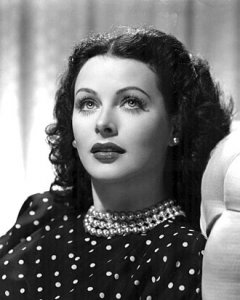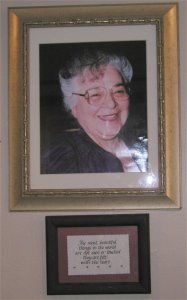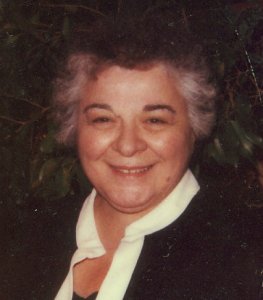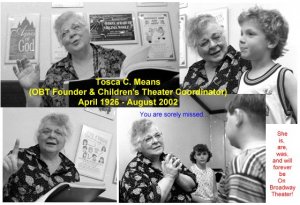Pecos
Well-known Member
- Location
- Washington State
And you did do something neat for me. Thanks.Aww I'm sorry!!! I wanted to do something neat for you!
And you did do something neat for me. Thanks.Aww I'm sorry!!! I wanted to do something neat for you!
Hold onto your hat there Graham. LOL!
View attachment 118160
Rose Schneiderman (April 6, 1882 – August 11, 1972) was a Polish-born American socialist and feminist, and one of the most prominent female labor union leaders. As a member of the New York Women's Trade Union League, she drew attention to unsafe workplace conditions, following the Triangle Shirtwaist Factory fire of 1911, and as a suffragist she helped to pass the New York state referendum of 1917 that gave women the right to vote. Schneiderman was also a founding member of the American Civil Liberties Union and served on the National Recovery Administration's Labor Advisory Board under President Franklin D. Roosevelt. She is credited with coining the phrase "Bread and Roses," to indicate a worker's right to something higher than subsistence living. (On Wiki)
Do you feel she needs a place on the list? If so see if you can find some bio info on her so we can learn some things about her & her career."Ginger Rogers", dancing in high heels, going backwards most of the time, does she deserve a place on the list, (though we think of her being a supporting act don't we?)?.
"If you insist", (was a joke really.Do you feel she needs a place on the list? If so see if you can find some bio info on her so we can learn some things about her & her career.
That's what you get for being a tease. LOL"If you insist", (was a joke really.!).

Can you be more specific?I know this might jar with many folks, but am I the only one thinking, "Is this all there is?"..
Maybe he thought there was only the 8 women. LOL!Can you be more specific?
I think it's cool that this woman had the nerve to run for president back then.View attachment 118261
Victoria Woodhull
Victoria Claflin Woodhull, later Victoria Woodhull Martin (September 23, 1838 – June 9, 1927), was an American leader of the women's suffrage movement. In 1872, she ran for President of the United States. While many historians and authors agree that Woodhull was the first woman to run for President of the United States, some have questioned that priority given issues with the legality of her run. They disagree with classifying it as a true candidacy because she was younger than the constitutionally mandated age of 35 (Woodhull's 35th birthday was in September 1873, seven months after the March inauguration). However, election coverage by contemporary newspapers does not suggest age was a significant issue; this may, however, be due to the fact that few took the candidacy seriously.
(You can read about her in Wikipedia)
No, not really unless you need me to try to explain what was supposed to be a joke!Grahamg wrote:
"I know this might jar with many folks, but am I the only one thinking, "Is this all there is?"..
Pepper wrote:
Can you be more specific?

Oops. I didn't know. Still don't, actually. Ask yourself "Would John Cleese say that?"No, not really unless you need me to try to explain what was supposed to be a joke!.




| Big Mama Thornton |
|---|
 Willie Mae Thornton (December 11, 1926 – July 25, 1984), better known as Big Mama Thornton, was an American rhythm-and-blues singer and songwriter. She was the first to record Leiber and Stoller's "Hound Dog", in 1952,[2] which became her biggest hit, staying seven weeks at number one on the Billboard R&B chart in 1953[3] and selling almost two million copies.[4] Thornton's other recordings included the original version of "Ball and Chain", which she wrote. Thornton's birth certificate states that she was born in Ariton, Alabama,[5] but in an interview with Chris Strachwitz she claimed Montgomery, Alabama as her birthplace, probably because Montgomery was better known than Ariton.[6] She was introduced to music in a Baptist church, where her father was a minister and her mother a singer. She and her six siblings began to sing at early ages.[7] Her mother died young, and Willie Mae left school and got a job washing and cleaning spittoons in a local tavern. In 1940 she left home and, with the help of Diamond Teeth Mary, joined Sammy Green's Hot Harlem Revue and was soon billed as the "New Bessie Smith".[6] Her musical education started in the church but continued through her observation of the rhythm-and-blues singers Bessie Smith and Memphis Minnie, whom she deeply admired.[8] Thornton's career began to take off when she moved to Houston in 1948. "A new kind of popular blues was coming out of the clubs in Texas and Los Angeles, full of brass horns, jumpy rhythms, and wisecracking lyrics."[9] In 1951 she signed a recording contract with Peacock Records and performed at the Apollo Theater in 1952. Also in 1952, while working with another Peacock artist Johnny Otis, she recorded "Hound Dog", the first record produced by its writers Jerry Leiber and Mike Stoller. The pair were present at the recording,[10] with Leiber demonstrating the song in the vocal style they had envisioned;[11][12] "We wanted her to growl it," Stoller said, which she did. Otis played drums, after the original drummer was unable to play an adequate part. The record sold more than half a million copies, and went to number one on the R&B chart,[13] helping to bring in the dawn of rock 'n' roll.[14] Although the record made Thornton a star, she saw little of the profits.[15] On Christmas Day 1954 in a theatre in Houston, Texas, she witnessed fellow performer Johnny Ace, also signed to Duke and Peacock record labels, accidentally shoot and kill himself while playing with a .22 pistol.[16] Thornton continued to record for Peacock until 1957 and performed in R&B package tours with Junior Parker and Esther Phillips. Thornton's success with "Hound Dog" was followed three years later by Elvis Presley recording his hit version of the song.[10] His recording at first annoyed Leiber who wrote, "I have no idea what that rabbit business is all about. The song is not about a dog, it's about a man, a freeloading gigolo."[14] But Elvis' version sold ten million copies, so today few fans know that "Hound Dog" began as "an anthem of black female power."[14] Similarly, Thornton originally recorded her song "Ball 'n' Chain" for Bay-Tone Records in the early 1960s, "and though the label chose not to release the song... they did hold on to the copyright"—which meant that Thornton missed out on the publishing royalties when Janis Joplin recorded the song later in the decade.[8] So at first I thought this was just because she was a woman. Am I wrong to assume that race obviously played a role in this for her as well? I was under the impression based on movies I've seen based on real life stories of artists whose work was given to the whites to perform because they weren't allowed on TV or something? I think that's a shame. In this case even more so. |
Break
I'm sorry but Janice can't hold a candle to this.
Do you feel she needs a place on the list? If so see if you can find some bio info on her so we can learn some things about her & her career.
